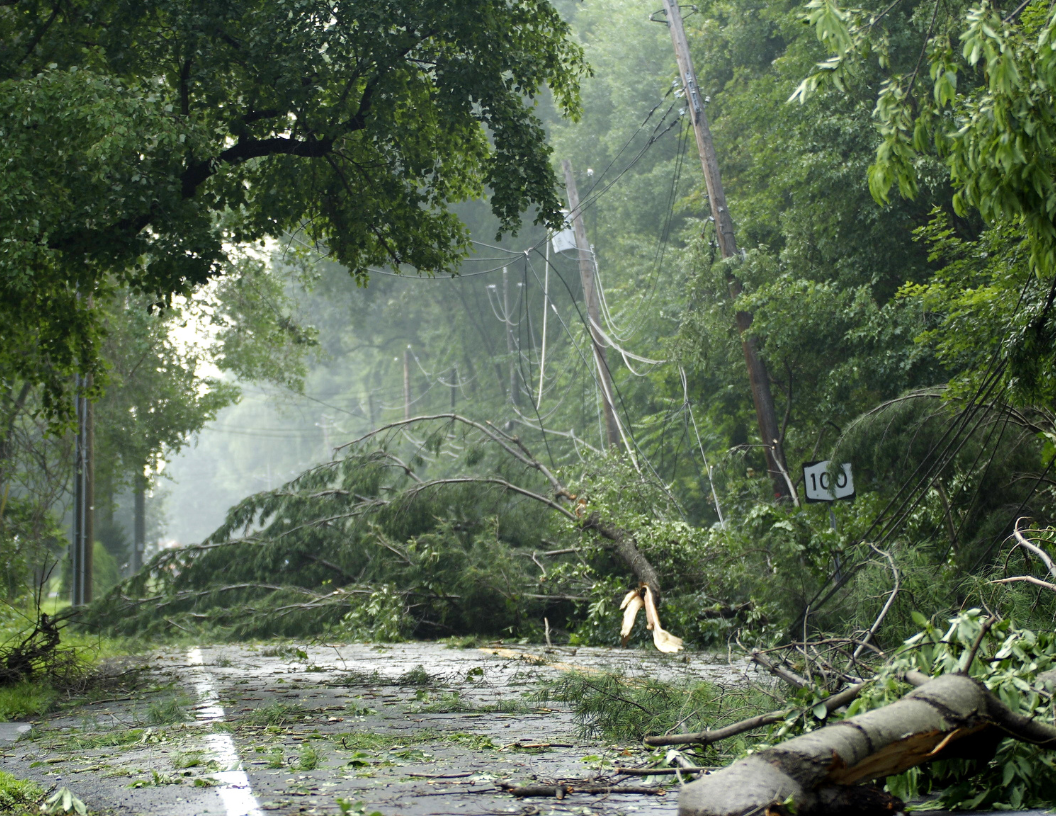Project Summary
Project Type:
SaaS-based EpochField map viewer and work management
implementation
Locations:
Middle Tennessee
Number of Members:
Nearly 430,000
Applications:
To obtain a system of record data capture solution for assessing and tracking storm damage to utility circuits.
Solutions Implemented:
EpochField Work Management
EpochField Mobile
EpochField WebSuite
Member Benefits:
Avoid time spent reconciling damage data across multiple repositories
Deploy storm damage assessment crews faster
Reassign field crews in the moment based on real-time data
Eliminate redundant storm damage field checks
Get storm-related damage repairs in progress sooner
Introduction
Nashville Electric Service (NES) is one of the 12 largest public electric utilities in the US, serving Middle Tennessee customers since 1939. The company distributes power to nearly 430,000 customers across a 700-square-mile service area that encompasses Nashville, Davidson County, and parts of six surrounding counties, through some 5,900 miles of distribution and transmission lines.
When a storm hits, assessing the damage to utility circuits quickly and accurately is essential to getting power restored. But the lack of a single data repository made it difficult to accomplish that goal. To improve the task of assessing and responding to storm damage, NES implemented the EpochField Work Management solution and mobile app in January 2024.
The Challenge: Conflicting Data Made Damage Assessment Difficult
“We need to get crews assigned quickly to the circuits we believe are most damaged after a storm,” said John Savary, NES Technical Lead. “But the process for assessing and tracking storm damage proved time consuming, inefficient, and error prone.” Though NES had moved from manual maps to the ArcGIS Online/Field Maps app, there was no single system of record for storm damage assessment data.
Instead, the Engineering team would use ArcGIS data to identify damaged circuits and assign crews to assess the situation on the ground. Their completed damage forms would populate a dashboard that informed real-time decisions on where to send repair crews and how to prioritize the work. Concurrently, a Systems Control team in Operations was collecting similar information submitted by field crews and operational centers via email, text, and phone, then creating a spreadsheet summarizing the data.
Without one system of record, many staff hours were spent reconciling the two repositories. “And because we didn’t have consistent data on work progress, some crews were going over the same circuit multiple times, wasting more hours and many vehicle miles,” said Savary, who served as the main technical contact for the project. Accurately assigning contractors to conduct post-storm repair checks also proved difficult. Even gathering the necessary information to report to Accounting and FEMA was challenging, jeopardizing the utility’s efforts to quantify and recover storm damage costs.
EpochField: Providing a System of Record that Streamlines Damage Assessment
EpochField will address all those challenges by becoming NES’s system of record for gathering and tracking storm damage assessments and subsequent field checks. This single repository will track which circuits have been assessed for damage and the findings, automatically triggering utility work orders within EpochField for the necessary repairs.
All storm damage-related data can reside within EpochField, color-coded by voltage, using readily recognizable symbols to represent common field assets for quick reference. And since the system can access NES’s outage and customer call system, it will be much easier to determine where damage is occurring and allocate field crews optimally.
In the field, NES assessors will use the system’s circuit tracing capabilities to identify which circuits and lines are affected and which control points are involved, with the ability to “breadcrumb” the areas they’ve inspected and note completed work using an auto-complete feature. Back in the war room, Operations can use the EpochField mobile app to trace circuits back to protection equipment, track the damage assessment effort, evaluate response times and percentage completion, post-storm inventory, and dynamically reassign assessors as the work progresses.
In the aftermath of a storm, EpochField’s offline access will prove invaluable in the field. “Our crews can keep accessing maps and gathering GIS data even without an Internet connection or cell phone access,” Savary said.
EpochField will even improve NES’s pre-storm planning. “We can organize our Tier 1 and Tier 2 resources and assign them to circuits in advance to reduce our preparation lead time,” Savary explained. “We’ll be able to get crews out at first light.”
The Implementation: "Best We've Ever Experienced"
“This was probably the best software implementation experience I’ve had in over 20 years working with vendors,” Savary said. He credits the Epoch Solutions Group team’s expertise, transparency, and communication as key drivers of the project’s success, along with their detailed approach to identifying the project requirements and the utility’s desired functionality.
“Epoch’s support was great during user acceptance testing and our internal mock storm testing and training,” he added. “They were always willing to go above and beyond.” Epoch’s Technical Lead even went on site during the utility’s field testing and was on call during multiple mock storm tests to provide support and answer questions on the spot.
The Results: Fast, Accurate Response Without the Waste of Data Reconciliation & Duplicate Work
NES will save significant staff time by eliminating labor-intensive data reconciliation steps and improving data accuracy. Before, an average-length storm involving three to four days of assessment required about 150 staff hours just to reconcile data from disparate sources. Another 25-40 hours was typically spent tracking down information to submit to FEMA for storm cost recovery. And that doesn’t include the untold hours wasted on duplicate field checks.
With EpochField serving as a single repository for storm damage assessment data, unnecessary steps will be eliminated, staff hours will be dramatically reduced, and the process significantly streamlined. “EpochField will allow us to efficiently organize resources, track progress in the office and the field, deploy crews faster, inventory repaired equipment more accurately with less effort, and supply all our field users with
our GIS maps,” Savary said. “Now, we can all be on the same page during and after a storm.”
Future Plan: More Ways to Leverage EpochField
Savary sees the potential for EpochField to improve efficiency at NES in other ways. Down the road, NES hopes to use the utility work scheduler to streamline vegetation management and manage Tennessee One-Calls during storm restoration efforts, as well as develop workflows for its pole inspection program and field
checking of design and as-built jobs.
Conclusion
The EpochField implementation at NES is a prime example of how leading utilities are employing SaaS utility software to respond to a dynamic landscape, where severe storms are more common and response speed more critical than ever. By enabling NES to leverage GIS data in a more streamlined way, Epoch Solutions Group is empowering the utility to improve efficiency and save hundreds of hours, enhance customer service, and ensure worker safety in the face of devastating storms.




